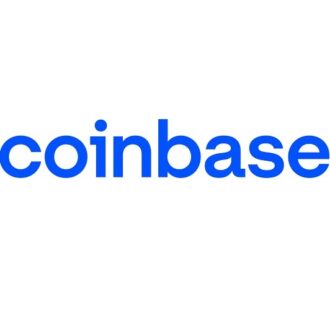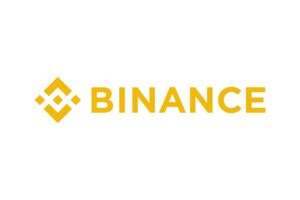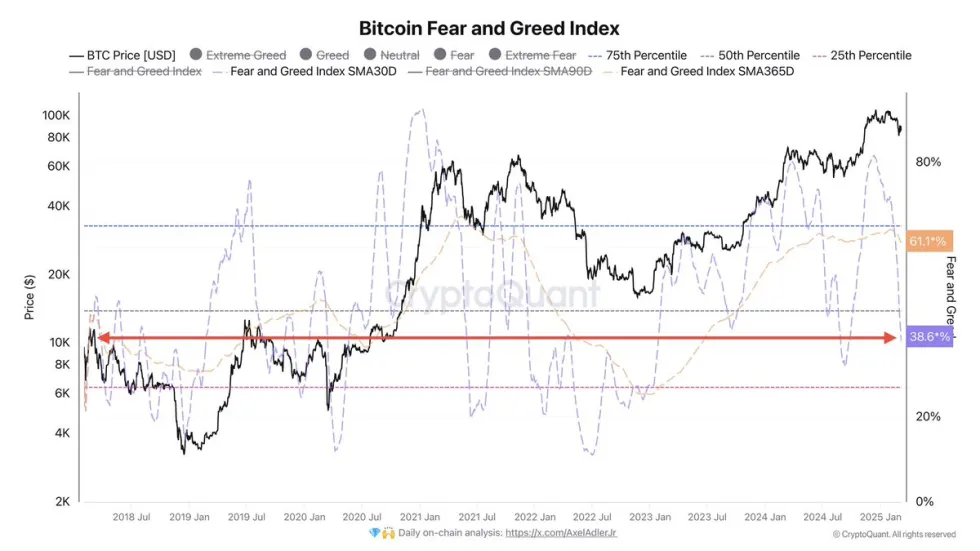
In an exclusive interview with Cointelegraph, Peng Zhong, CEO of Tendermint, the core developer of the Cosmos blockchain, discussed recent cutting-edge advancements in the ecosystem.
Ever since the launch of the inter-blockchain communications, or IBC, protocol in March, which enabled the communication and transfer of digital assets across different blockchains, development activity seems to have picked up pace on the Cosmos (ATOM) network.
Transaction volumes, the creation of decentralized applications and the number of chains connected via IBC have all been trending upwards in recent months. Speakers at the Cosmoverse Conference, which took place last week, presented many of the latest technologies under development on the blockchain. Its biggest-ever hackathon will also take place in Lisbon tomorrow.
#HackAtomVI is trending in the dev community!
— Cosmos - Internet of Blockchains ⚛️ (@cosmos) November 9, 2021
1000+ Developers Have Already Registered to the Biggest HackAtom in Cosmos History!
Don't miss your chance to win $1M+ in Prize Pool and start your journey in the Internet of Blockchains with a Bang!https://t.co/TqAedC16jn pic.twitter.com/w1hasCxyQo
Tendermint is the core developer behind the Cosmos blockchain and serves as its gateway to the ecosystem. On Wednesday morning, Peng Zhong, the company's CEO, joined Cointelegraph in an exclusive interview to discuss the future of the Cosmos network.
Cointelegraph: What are some of the development highlights surrounding the Cosmos blockchain in terms of the decentralized finance, or DeFi, ecosystem?
Peng Zhong: I think the biggest highlight was early this year when Inter-Blockchain Communications (IBC) launched on the Cosmos hub for the first time. Not much happened after that. People were like, okay, IBC is live, now what do I do? But now, we are seeing 22 blockchains that support IBC. They have all been able to connect to various decentralized exchanges (DEXs) available in the Cosmos ecosystem, such as Osmosis, Gravity DEX. So there's been a lot of cross-chain activity, much more than anyone expected. And we are seeing a very positive growth cycle with IBC enabled.
Total transaction volume on the Cosmos blockchain in the past 30 days. | Source: ATOMSc
CT: Interesting, so where do you see the IBC ecosystem heading, say, five years from now?
PZ: That's very far in the future. I was going to present tomorrow that we are seeing 22 chains today, and next, we'll see about 200 chains connected through IBC next year. I haven't thought about five years out, but my long-term vision running Tendermint and with our focus on bringing more users to Cosmos and a better development experience to the Cosmos Stack. We'll see a million blockchains in the future. Five years from now, I would expect that number to be tens of thousands, if not hundreds of thousands of chains linked through IBC. And that'll be absolutely spectacular, but we have a lot of work to do on the infrastructure side to handle all that encrypted data.
CT: Regarding the recent Cosmosverse, an intriguing development that came up was the concept of liquid staking. Would you mind providing more information on that?
PZ: I believe there are at least three different implementations of liquid staking as presented at Cosmoverse. It was a fantastic conference; I met many people who've been working in this space during the pandemic and never got a chance to see them face to face until now. And then people working at Cosmos for over five years and are still around -- and it speaks to the strength of the ecosystem. So liquid staking at a high level is the ability to allow users to double-dip with their assets. Most commonly, in proof-of-stake (PoS) protocols, you need to stake your tokens to secure the network as a user. And by staking your tokens, you earn yields. For the Cosmos Hub, it's generally between 7% to 20% APY. But then you look at some DeFi protocols, for example, Osmosis or other DEXs built on Cosmos, and you can see that during the launch of these DEXs, they [the developers] want to increase liquidity.
So APYs can be at thousands of percent within a few weeks or hundreds of percent for a few months. And they are much much higher than staking yield. So there is this constant battle, or tug of war, between the incentives for staking, which is to secure the network and is good for everyone, but you earn minimal yield. This is compared to incentives provided by DEXs for acting as liquidity providers, which is very tantalizing. So liquid staking is the ability to allow you as a staker to stake your assets, but at the same time, you get a token that represents your staked position.
So if you stake 100 ATOM, instead of receiving nothing in return other than a steady stream of staking rewards, you would receive [both] staking rewards in ATOM, and you would receive a staked version of your ATOM, let's say sATOM. And that is only IBC-enabled, which means you get to permissionlessly transfer it to DEXs and use that to provide liquidity in pools. That's the general idea of liquid staking —It's a big feature that's coming to multiple blockchains at once.
The version that's coming to the Cosmos hub is more standard, it's where you stake the assets, and you get a token that you can use interchain. The version proposed by Osmosis is called Superfluid staking, which is the ability to provide liquidity in a DEX while being issued liquidity provider tokens (LPs) back, which you can use to stake on the blockchain. So whether you LP first or stake first, you always get the representation you can use across IBC, which is a lot of flexibility and freedom.
However, it adds a lot of added risk because this is now like a second-level derivative of your original token. So if anything breaks down along the way, you might be in trouble. But for those of you who have a big appetite for risk, liquid staking offers more than what you can get off traditional yields.
CT: Is this technology theoretically applicable to all kinds of pools? For example, can I receive a lending token to back deposit into a staking pool to earn yields if I lend out my crypto?
PZ: Exactly, you're on the right track. And there can be many levels of this, and each level gives added risk to your portfolio, so it's a matter of figuring out how much risk you are willing to take. A lot of this [liquid staking] has happened in Ethereum due to the power of ERC-20 tokens, but it's only started to be developed in the Cosmos ecosystem. And of course, in Cosmos, there is an added layer of complexity on top due to the differences in the level of security. So part of the proposed benefit of liquid staking is the ability to share security between multiple chains at once. Which is sort of a looser version of Ethereum where everything is secured by the token.
CT: Another recent development discussed at Cosmoverse is ABCI++ and how it can help improve cross-chain functionality and oracles. Would you mind elaborating more on that?
So the Tendermint Core protocol hasn't been updated in quite a long time in terms of new features. And ABCI++ is a very big new feature. What it does is that it increases the features that Tendermint Core can support. So right now, a function can be run at the end of every single block, which is what all Cosmos blockchains use to do their business logic. At the end of every single block, which on Cosmos, is usually six to seven seconds, some activity can happen. But the Tendermint Core Consensus, while it does create consensus around new blocks, it's not a single-step process; in fact, it's a five-step process of block consensus creation.
There's, in fact, a built-in block explorer in the past, which hasn't been updated much, but actually shows every step of Tendermint block consensus. What ABCI++ is, is that it allows a developer to tap into each one of these five steps. You can imagine them. Instead of just admitting one event for every block that's complete, it admits now five events, and now you can pick and choose which step you want to admit to a consensus that you want to run for that function. And that introduces a lot of potential for more efficient calculations.
The New [v0.35] #TendermintCore Release:
— Tendermint (@tendermintHQ) November 5, 2021
• Prioritized Mempool
• Peer-to-peer Network Makeover
• StateSync Improvements
• Go API Internalization and Stability
…and additional Great Features to discover https://t.co/zXP4t6EBiF pic.twitter.com/zQtV6paZgm
CT: Is Tendermint taking any steps to introduce Cosmos into the Metaverse?
PZ: Yeah, so I think the Metaverse is quite undefined right now. It's everyone building things as Web 3.0. Of course, Facebook can take a claim that they're building the Metaverse, but it's only going to be Facebook's wall garden Metaverse. There's going to be Google's wall garden Metaverse and Apple's version of that. I would assume Steam and Epic Games have their own version. But the version that most of us want today is open-ended and permissionless.
CT: What are some of the highlights of the upcoming hackathon?
PZ: So it's the biggest Cosmos hackathon. And I think Cosmos is the second largest crypto ecosystem in the world, with over $170 billion [of assets] built on the Cosmos infrastructure. It's a very significant event for the world at large. Zooming out a little bit and looking at what happened last year, which was on a much smaller scale. That was when this proof of concept DEX project called Osmosis won the biggest prize. And today, Osmosis is a live blockchain with over $700 million in TVL [total value locked]. Maybe it's a fluke, but I'm hoping to see projects of this caliber this year. This time around, we have far more prize categories — I believe it's seven, each with over $200,000 worth of prizes. This wide array of prizes is our way of making sure people are solving a diverse set of problems. There's so much unbuilt infrastructure, and it doesn't make sense to award only one prize.
Growth of TVL on the Osmosis DEX. | Source: DeFi Llama
CT: Would you like to share any other comments or visions regarding Tendermint and the Cosmos blockchain?
PZ: Yes, I believe that Cosmos is the only ecosystem that tries to democratize access to finance, more so than any other ecosystem. Because in Cosmos, you don't need to buy a token to get involved in the ecosystem. When you build on Cosmos, you don't have to buy anything. You don't have to pay for gas, and that I believe is something very valuable in economies where you can't really afford expensive transactions, and when you don't really have the capital to really experiment with these hybrid ecosystems, like Polkadot or Avalanche or Polkadot or Ethereum, and appealing to people with time. Young people with time but no capital are out of Web 1.0 today, and Cosmos will win Web 3.0. And that's really the core mission of Tendermint, to bring newcomers, make it as easy as possible to build things, and we welcome everyone.

You can get bonuses upto $100 FREE BONUS when you:
💰 Install these recommended apps:
💲 SocialGood - 100% Crypto Back on Everyday Shopping
💲 xPortal - The DeFi For The Next Billion
💲 CryptoTab Browser - Lightweight, fast, and ready to mine!
💰 Register on these recommended exchanges:
🟡 Binance🟡 Bitfinex🟡 Bitmart🟡 Bittrex🟡 Bitget
🟡 CoinEx🟡 Crypto.com🟡 Gate.io🟡 Huobi🟡 Kucoin.




















Comments